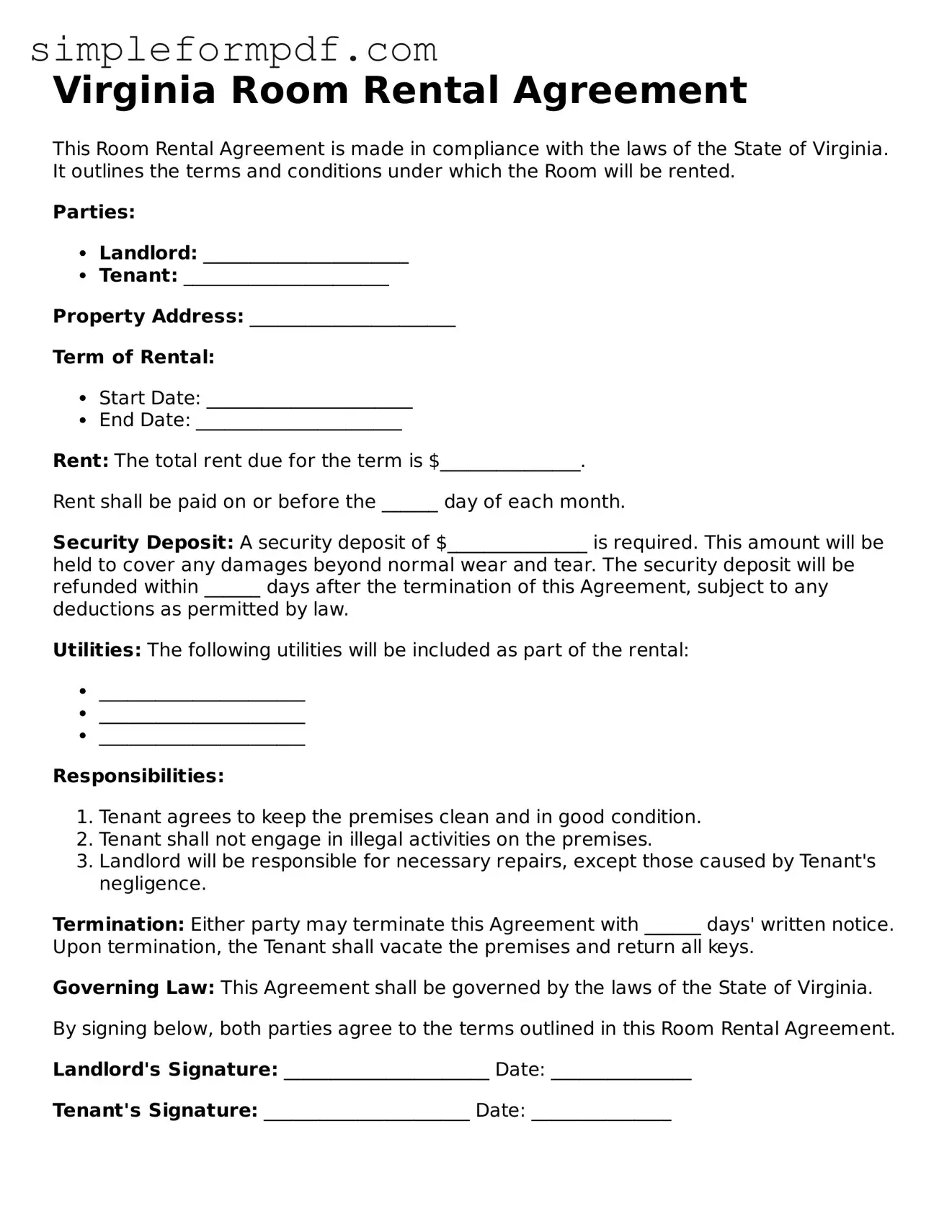Virginia Room Rental Agreement
This Room Rental Agreement is made in compliance with the laws of the State of Virginia. It outlines the terms and conditions under which the Room will be rented.
Parties:
- Landlord: ______________________
- Tenant: ______________________
Property Address: ______________________
Term of Rental:
- Start Date: ______________________
- End Date: ______________________
Rent: The total rent due for the term is $_______________.
Rent shall be paid on or before the ______ day of each month.
Security Deposit: A security deposit of $_______________ is required. This amount will be held to cover any damages beyond normal wear and tear. The security deposit will be refunded within ______ days after the termination of this Agreement, subject to any deductions as permitted by law.
Utilities: The following utilities will be included as part of the rental:
- ______________________
- ______________________
- ______________________
Responsibilities:
- Tenant agrees to keep the premises clean and in good condition.
- Tenant shall not engage in illegal activities on the premises.
- Landlord will be responsible for necessary repairs, except those caused by Tenant's negligence.
Termination: Either party may terminate this Agreement with ______ days' written notice. Upon termination, the Tenant shall vacate the premises and return all keys.
Governing Law: This Agreement shall be governed by the laws of the State of Virginia.
By signing below, both parties agree to the terms outlined in this Room Rental Agreement.
Landlord's Signature: ______________________ Date: _______________
Tenant's Signature: ______________________ Date: _______________
